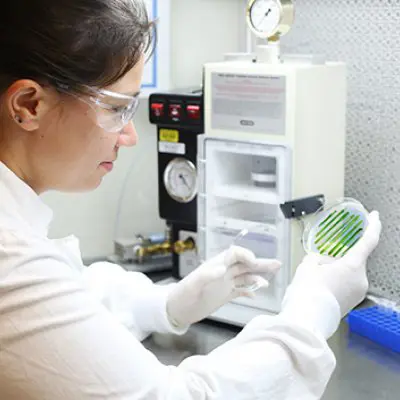Algae Just Changed the Game for Growing Human Cells

In the search for better ways to heal human skin, a microscopic plant may hold the answer.
Researchers at the University of Queensland have developed a cheaper, greener, and more ethical method for growing human cells, using algae as the key ingredient. The breakthrough could revolutionize tissue engineering, especially for burn patients in urgent need of lab-grown skin.
Traditionally, cultivating human cells requires fetal bovine serum (FBS), a costly and ethically controversial substance harvested from unborn calves. It's long been the gold standard for nourishing cell cultures, but it comes with high prices, limited supply, and serious ethical baggage.
Now, UQ researchers have shown that a compound derived from common freshwater algae can do the job just as well, if not better.
The compound, known as phyto-serum, is extracted from Chlorella vulgaris, an algae species already used in supplements and skincare. In lab tests, it supported the healthy growth of human skin cells, offering a cruelty-free and sustainable alternative to animal-derived serums.
“It’s not just about ethics,” says lead researcher Dr. David Leavesley. “It’s about accessibility. This method could make regenerative medicine more affordable and scalable worldwide.”
There’s another benefit: speed
The team found that cells grown in the algae-derived medium could proliferate faster, potentially cutting down the time it takes to produce new skin for grafting onto burns or wounds.
The discovery arrives at a crucial time. As regenerative medicine advances and demand for tissue therapies grows, the need for sustainable cell culture solutions has never been greater.
If further testing proves successful, this algae-based method could soon find its way into hospitals, biotech labs, and even space missions, anywhere human cells need to grow, without relying on animals.
From a drop of pond-green algae, a new future for human healing might be blooming.